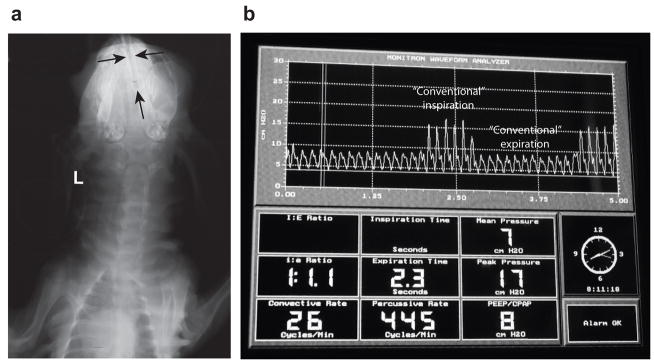Figure 1.

HFNV support preparation and airway pressure tracings. Panel a: Head radiograph of a preterm lamb supported by HFNV for 3d (posterior-anterior view; L, left). Black arrows highlight the uncuffed tube in the nasal cavity. The vertical black arrow identifies the tube’s tip, which is ~5 cm along the length of the nose (~10 cm). Panel b: View of the display panel of the Percussionaire VDR4 ventilator, showing phasic trace of intra-tracheal pressure and numeric data for respiratory values. The intra-tracheal pressure trace has continuous high-frequency percussions (jagged contours), including through ‘conventional inspiration’. The convective rate is 26, PIP is 17 cmH2O, and PEEP is 8 cmH2O. High-frequency rate is ~7 Hz (445 cycles/min) and mean pressure is 7 cmH2O.
